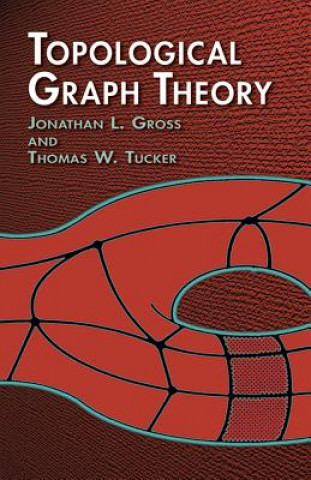
Kód: 02565597
Topological Graph Theory
Autor Gross & Tucker
1. Introduction 1.1 Representation of Graphs 1.1.1 Drawings 1.1.2 Incidence Matrix 1.1.3 Euler's theorem on valence sum 1.1.4 Adjacency Matrix 1.1.5 Directions 1.1.6 Graphs, maps, isomorphisms 1.1.7 Automorphisms 1 ... celý popis
- Jazyk:
 Angličtina
Angličtina - Vazba: Brožovaná
- Počet stran: 361
Nakladatelství: Dover Publications Inc., 2003
- Více informací o knize

490 Kč
Dostupnost:
50 % šance Máme informaci, že by titul mohl být dostupný. Na základě vaší objednávky se ho pokusíme do 6 týdnů zajistit.
Máme informaci, že by titul mohl být dostupný. Na základě vaší objednávky se ho pokusíme do 6 týdnů zajistit.Prohledáme celý svět
Mohlo by se vám také líbit
-

LEGO Life Hacks
312 Kč -

Read with Oxford: Stages 2-3: Biff, Chip and Kipper: My Phonics Kit
356 Kč -

Harry Potter and the Chamber of Secrets - Ravenclaw Edition
335 Kč -

Mid-Century Modern Graphic Design
763 Kč -

Networks
2320 Kč -

Classic Works from Women Writers
518 Kč -

Midnight Hour
196 Kč -

Lonely Planet Chicago
564 Kč -

Brand Portfolio Strategy
616 Kč -

Niggalations: The Lost book of Ghetto Philosophers: Inspirational quotes
389 Kč -

Terra Incognita
837 Kč -

STM32F103 Arm Microcontroller and Embedded Systems
713 Kč -

Bing: My Toilet Train Sticker Book
112 Kč -

All about Bluey
142 Kč -

Rota Mundi Tarot: The Rosicrucian Arcanum
755 Kč -

Why We're Polarized
323 Kč -

Mystery Colors: Christmas: Color by Number & Discover the Magic
307 Kč -

How To Be A Games User Researcher
627 Kč -

Bees, Birds & Butterflies Sticker Anthology
422 Kč -

30 and 1 Indian Mantras for Tongue Drum and Handpan
374 Kč -

Sonic The Hedgehog: The IDW Collection, Vol. 2
1209 Kč -

Subtle Art of Not Giving a F*ck Journal
433 Kč -

Perfect Day to Boss Up
356 Kč -

Radiant Black, Volume 3: A Massive-Verse Book
377 Kč -

Bungo Stray Dogs: Another Story, Vol. 2
280 Kč -

Imogen, Obviously
480 Kč -

Avatar The Way of Water The Visual Dictionary
678 Kč -

Girl, Goddess, Queen
410 Kč -

Marie Laurencin – Sapphic Paris
1178 Kč -

Saving 6
297 Kč -

Star Wars: Episode III: Revenge of the Sith
303 Kč -

Pocket Atlas of Remote Islands
618 Kč -

Burning Bridge
224 Kč -

Transport Nodal System
3176 Kč -

Healing Scripts
1124 Kč -

Dragon Ball Z, Vol. 14
207 Kč -

The Art of Spirited Away
704 Kč -

How to Read a Book
303 Kč -

Languages of the World
2035 Kč -

The Concise Art of Seduction
205 Kč -

Edward's Crochet Imaginarium
543 Kč -

The Oxygen Advantage
410 Kč -

Curious George Haunted Halloween
145 Kč -

Sketching Product Design Presentation
863 Kč -

Galgo Espanol
798 Kč -

Guess How Much I Love You
213 Kč -

Test Your English Vocabulary in Use Upper-intermediate Book with Answers
595 Kč -

Refactoring
1319 Kč -

Inception
421 Kč -

Orlando
223 Kč -

Art of Tatting Jewelry, The
404 Kč -

George Elton Mayo
20891 Kč -

Romantic Poets
326 Kč -

TNM Classification of Malignant Tumours 8e
1293 Kč -

Testuj Swoj Polski: Gramatyka 1: Test Your Polish: Grammar 1
235 Kč -

Tell-tale Brain
375 Kč -

MAYA BLUE
928 Kč -

Vauxhall/Opel Vectra Petrol & Diesel Service And R
906 Kč -

Mit Erfolg zum Goethe-Zertifikat C1 - Ubungsbuch
598 Kč -

Krimi-Advent mit Sherlock Holmes, Zettelkalender
396 Kč -

Ciekawski George w wielkim mieście
86 Kč -

Spektrum Deutsch B2: Teilband 1
443 Kč -

Macarons
246 Kč
Dárkový poukaz: Radost zaručena
- Darujte poukaz v libovolné hodnotě a my se postaráme o zbytek.
- Poukaz se vztahuje na celou naši nabídku.
- Elektronický poukaz vytisknete z e-mailu a můžete ihned darovat.
- Platnost poukazu je 12 měsíců od data vystavení.
Informovat o naskladnění knihy
Zadejte do formuláře e-mailovou adresu a jakmile knihu naskladníme, zašleme vám o tom zprávu. Pohlídáme vše za vás.
Více informací o knize Topological Graph Theory
Nákupem získáte 49 bodů
 Anotace knihy
Anotace knihy
1. Introduction 1.1 Representation of Graphs 1.1.1 Drawings 1.1.2 Incidence Matrix 1.1.3 Euler's theorem on valence sum 1.1.4 Adjacency Matrix 1.1.5 Directions 1.1.6 Graphs, maps, isomorphisms 1.1.7 Automorphisms 1.1.8 Exercises 1.2 Some important classes of graphs 1.2.1 Walks, paths, and cycles; connectedness 1.2.2 Trees 1.2.3 Complete graphs 1.2.4 Cayley graphs 1.2.5 Bipartite graphs 1.2.6 Bouquets of Circles 1.2.7 Exercises 1.3 New graphs from old 1.3.1 Subgraphs 1.3.2 Topological representations, subdivisions, graph homeomorphisms 1.3.3 Cartesian products 1.3.4 Edge-complements 1.3.5 Suspensions 1.3.6 Amalgamations 1.3.7 Regular quotients 1.3.8 Regular coverings 1.3.9 Exercises 1.4 Surfaces and imbeddings 1.4.1 Orientable surfaces 1.4.2 Nonorientable surfaces 1.4.3 Imbeddings 1.4.4 Euler's equation for the sphere 1.4.5 Kuratowski's graphs 1.4.6 Genus of surfaces and graphs 1.4.7 The torus 1.4.8 Duality 1.4.9 Exercises 1.5 More graph-theoretic background 1.5.1 Traversability 1.5.2 Factors 1.5.3 Distance, neighborhoods 1.5.4 Graphs colorings and map colorings 1.5.5 Edge operations 1.5.6 Algorithms 1.5.7 Connectivity 1.5.8 Exercises 1.6 Planarity 1.6.1 A nearly complete sketch of the proof 1.6.2 Connectivity and region boundaries 1.6.3 Edge contraction and connectivity 1.6.4 Planarity theorems for 3-connected graphs 1.6.5 Graphs that are not 3-connected 1.6.6 Algorithms 1.6.7 Kuratowski graphs for higher genus 1.6.8 Other planarity criteria 1.6.9 Exercises 2. Voltage Graphs and Covering Spaces 2.1 Ordinary voltages 2.1.1 Drawings of voltage graphs 2.1.2 Fibers and the natural projection 2.1.3 The net voltage on a walk 2.1.4 Unique walk lifting 2.1.5 Preimages of cycles 2.1.6 Exercises 2.2 Which graphs are derivable with ordinary voltages? 2.2.1 The natural action of the voltage group 2.2.2 Fixed-point free automorphisms 2.2.3 Cayley graphs revisited 2.2.4 Automorphism groups of graphs 2.2.5 Exercises 2.3 Irregular covering graphs 2.3.1 Schreier graphs 2.3.2 Relative voltages 2.3.3 Combinatorial coverings 2.3.4 Most regular graphs are Schreier graphs 2.3.5 Exercises 2.4 Permutation voltage graphs 2.4.1 Constructing covering spaces with permutations 2.4.2 Preimages of walks and cycles 2.4.3 Which graphs are derivable by permutation voltages? 2.4.4 Identifying relative voltages with permutation voltages 2.4.5 Exercises 2.5 Subgroups of the voltage group 2.5.1 The fundamental semigroup of closed walks 2.5.2 Counting components of ordinary derived graphs 2.5.3 The fundamental group of a graph 2.5.4 Contracting derived graphs onto Cayley graphs 2.5.5 Exercises 3. Surfaces and Graph Imbeddings 3.1 Surfaces and simplicial complexes 3.1.1 Geometric simplicial complexes 3.1.2 Abstract simplicial complexes 3.1.3 Triangulations 3.1.4 Cellular imbeddings 3.1.5 Representing surfaces by polygons 3.1.6 Pseudosurfaces and block designs 3.1.7 Orientations 3.1.8 Stars, links, and local properties 3.1.9 Exercises 3.2 Band Decompositions and graph imbeddings 3.2.1 Band decomposition for surfaces 3.2.2 Orientability 3.2.3 Rotation systems 3.2.4 Pure rotation systems and orientable surfaces 3.2.5 Drawings of rotation systems 3.2.6 Tracing faces 3.2.7 Duality 3.2.8 Which 2-complexes are planar? 3.2.9 Exercises 3.3 The classification of surfaces 3.3.1 Euler characteristic relative to an imbedded graph 3.3.2 Invariance of Euler characteristic 3.3.3 Edge-deletion surgery and edge sliding 3.3.4 Completeness of the set of orientable models 3.3.5 Completeness of the set of nonorientable models 3.3.6 Exercises 3.4 The imbedding distribution of a graph 3.4.1 The absence of gaps in the genus range 3.4.2 The absence of gaps in the crosscap range 3.4.3 A genus-related upper bound on the crosscap number 3.4.4 The genus and crosscap number of the complete graph K subscript 7 3.4.5 Some graphs of crosscap number 1 but arbitrarily large genus 3.4.6 Maximum genus 3.4.7 Distribution of genus and face sizes 3.4.8 Exercises 3.5 Algorithms and formulas for minimum imbeddings 3.5.1 Rotation-system algorithms 3.5.2 Genus of an amalgamation 3.5.3 Crosscap number of an amalgamation 3.5.4 The White-Pisanski imbedding of a cartesian product 3.5.5 Genus and crosscap number of cartesian products 3.5.6 Exercises 4. Imbedded voltage graphs and current graphs 4.1 The derived imbedding 4.1.1 Lifting rotation systems 4.1.2 Lifting faces 4.1.3 The Kirchhoff Voltage Law 4.1.4 Imbedded permutation voltage graphs 4.1.5 Orientability 4.1.6 An orientability test for derived surfaces 4.1.7 Exercises 4.2 Branched coverings of surfaces 4.2.1 Riemann surfaces 4.2.2 Extension of the natural covering projection 4.2.3 Which branch coverings come from voltage graphs? 4.2.4 The Riemann-Hurwitz equation 4.2.5 Alexander's theorem 4.2.6 Exercises 4.3 Regular branched coverings and group actions 4.3.1 Groups acting on surfaces 4.3.2 Graph automorphisms and rotation systems 4.3.3 Regular branched coverings and ordinary imbedded voltage graphs 4.3.4 Which regular branched coverings come from voltage graphs? 4.3.5 Applications to group actions on the surface S subscript 2 4.3.6 Exercises 4.4 Current graphs 4.4.1 Ringel's generating rows for Heffter's schemes 4.4.2 Gustin's combinatorial current graphs 4.4.3 Orientable topological current graphs 4.4.4 Faces of the derived graph 4.4.5 Nonorientable current graphs 4.4.6 Exercises 4.5 Voltage-current duality 4.5.1 Dual directions 4.5.2 The voltage graph dual to a current graph 4.5.3 The dual derived graph 4.5.4 The genus of the complete bipartite graph K (subscript m, n) 4.5.5 Exercises 5. Map colorings 5.1 The Heawood upper bound 5.1.1 Average valence 5.1.2 Chromatically critical graphs 5.1.3 The five-color theorem 5.1.4 The complete-graph imbedding problem 5.1.5 Triangulations of surfaces by complete graphs 5.1.6 Exercises 5.2 Quotients of complete-graph imbeddings and some variations 5.2.1 A base imbedding for orientable case 7 5.2.2 Using a coil to assign voltages 5.2.3 A current-graph perspective on case 7 5.2.4 Orientable case 4: doubling 1-factors 5.2.5 About orientable cases 3 and 0 5.2.6 Exercises 5.3 The regular nonorientable cases 5.3.1 Some additional tactics 5.3.2 Nonorientable current graphs 5.3.3 Nonorientable cases 3 and 7 5.3.4 Nonorientable case 0 5.3.5 Nonorientable case 4 5.3.6 About nonorientable cases 1, 6, 9, and 10 5.3.7 Exercises 5.4 Additional adjacencis for irregular cases 5.4.1 Orientable case 5 5.4.2 Orie 6.1.1 Recovering a Cayley graph from any of its quotients 6.1.2 A lower bound for the genus of most abelian groups 6.1.3 Constructing quadrilateral imbeddings for most abelian groups 6.1.4 Exercises 6.2 The symmetric genus 6.2.1 Rotation systems and symmetry 6.2.2 Reflections 6.2.3 Quotient group actions on quotient surfaces 6.2.4 Alternative Cayley graphs revisited 6.2.5 Group actions and imbeddings 6.2.6 Are genus and symmetric genus the same? 6.2.7 Euclidean space groups and the torus 6.2.8 Triangle groups 6.2.9 Exercises 6.3 Groups of small symmetric genus 6.3.1 The Riemann-Hurwitz equation revisited 6.3.2 Strong symmetric genus 0 6.3.3 Symmetric genus 1 6.3.4 The geometry and algebra of groups of symmetric genus 1 6.3.5 Hurwitz's theorem 6.3.6 Exercises 6.4 Groups of small genus 6.4.1 An example 6.4.2 A face-size inequality 6.4.3 Statement of main theorem 6.4.4 Proof of theorem 6.4.2: valence d = 4 6.4.5 Proof of theorem 6.4.2: valence d = 3 6.4.6 Remarks about Theorem 6.4.2 6.4.7 Exercises References Bibliography Supplementary Bibliography Table of Notations Subject Index
 Parametry knihy
Parametry knihy
Zařazení knihy Knihy v angličtině Mathematics & science Mathematics
490 Kč
- Plný název: Topological Graph Theory
- Autor: Gross & Tucker
- Jazyk:
 Angličtina
Angličtina - Vazba: Brožovaná
- Počet stran: 361
- EAN: 9780486417417
- ISBN: 0486417417
- ID: 02565597
- Nakladatelství: Dover Publications Inc.
- Hmotnost: 408 g
- Rozměry: 142 × 216 × 23 mm
- Datum vydání: 28. March 2003
Oblíbené z jiného soudku
-

Trachtenberg Speed System of Basic Mathematics
303 Kč -

Lectures in Set Theory
1221 Kč -
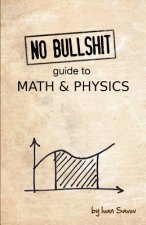
No Bullshit Guide to Math and Physics
681 Kč -

Math Art
543 Kč -

Basic Mathematics
1451 Kč -

Love and Math
420 Kč -

Mathematics: A Very Short Introduction
249 Kč -

Effective Data Storytelling - How to Drive Change with Data, Narrative and Visuals
792 Kč -

Microsoft Power BI For Dummies
715 Kč -

Vedic Mathematics
512 Kč -
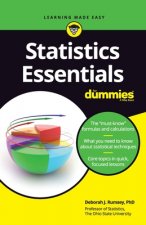
Statistics Essentials For Dummies
261 Kč -
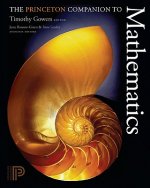
Princeton Companion to Mathematics
2583 Kč -

Calculus For The Practical Man
1141 Kč -

Algebra I Essentials For Dummies
266 Kč -

William Lowell Putnam Mathematical Competition 1985-2000
2006 Kč -

Schaum's Outline of Geometry, Sixth Edition
436 Kč -

Schaum's Outline of Mathematical Handbook of Formulas and Tables, Fifth Edition
410 Kč -

Mathematics in the 21st Century
3313 Kč -

Kendalls Advanced Theory of Statistics 6e 3VST
12260 Kč -

Pearson Edexcel International A Level Mathematics Pure 2 Mathematics Student Book
958 Kč -

ISE Discrete Mathematics and Its Applications
1930 Kč -

Mathematics Analysis and Approaches for the IB Diploma Standard Level
2325 Kč -

Mathematics for the Non-mathematician
714 Kč -

Change Is the Only Constant
538 Kč -

Fashion, Faith, and Fantasy in the New Physics of the Universe
438 Kč -

Mathematics
1206 Kč -

Big Data in Practice (use cases) - How 45 Successful Companies Used Big Data Analytics to Deliver Extraordinary Results
938 Kč -
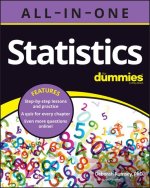
Statistics All-in-One For Dummies (+ Chapter Quizzes Online)
690 Kč -

Calculus Essentials For Dummies
266 Kč -

Sciencia
538 Kč -

Practical Algebra: A Self-Teaching Guide, Third Ed ition
484 Kč -

Street-Fighting Mathematics
1117 Kč -
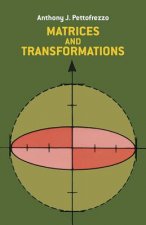
Matrices and Transformations
215 Kč -

Proof and the Art of Mathematics
1009 Kč -
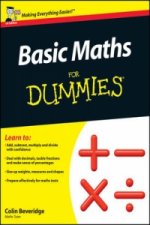
Basic Maths For Dummies
472 Kč -

Calculus For The Practical Man
1479 Kč -

SQL for Data Scientists - A Beginner's Guide for Building Datasets for Analysis
938 Kč -

Applied Functional Analysis
593 Kč -
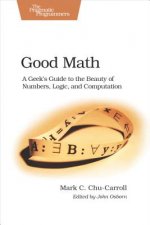
Good Math
795 Kč -

Chebyshev Polynomials: From Approximation Theory to Algebra and Number Theory
503 Kč -
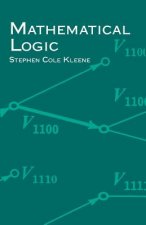
Mathematical Logic
517 Kč -

Pearson Edexcel GCSE (9-1) Mathematics Foundation Student Book 1
568 Kč -

Taxes For Dummies 2022 Edition
716 Kč -

Playing with Infinity
374 Kč -

Pearson Edexcel GCSE (9-1) Mathematics Foundation Student Book 2
568 Kč -

Cambridge International AS & A Level Mathematics Pure Mathematics 1 Student's Book
737 Kč -

Mathematics for the IB Diploma: Higher Level with CD-ROM
2021 Kč -

Mathematics Analysis and Approaches for the IB Diploma Higher Level
2365 Kč -

Mathematics for the IB Diploma Standard Level with CD-ROM
1748 Kč
Osobní odběr Praha, Brno a 12903 dalších
Copyright ©2008-24 nejlevnejsi-knihy.cz Všechna práva vyhrazenaSoukromíCookies


 Vrácení do měsíce
Vrácení do měsíce 571 999 099 (8-15.30h)
571 999 099 (8-15.30h)